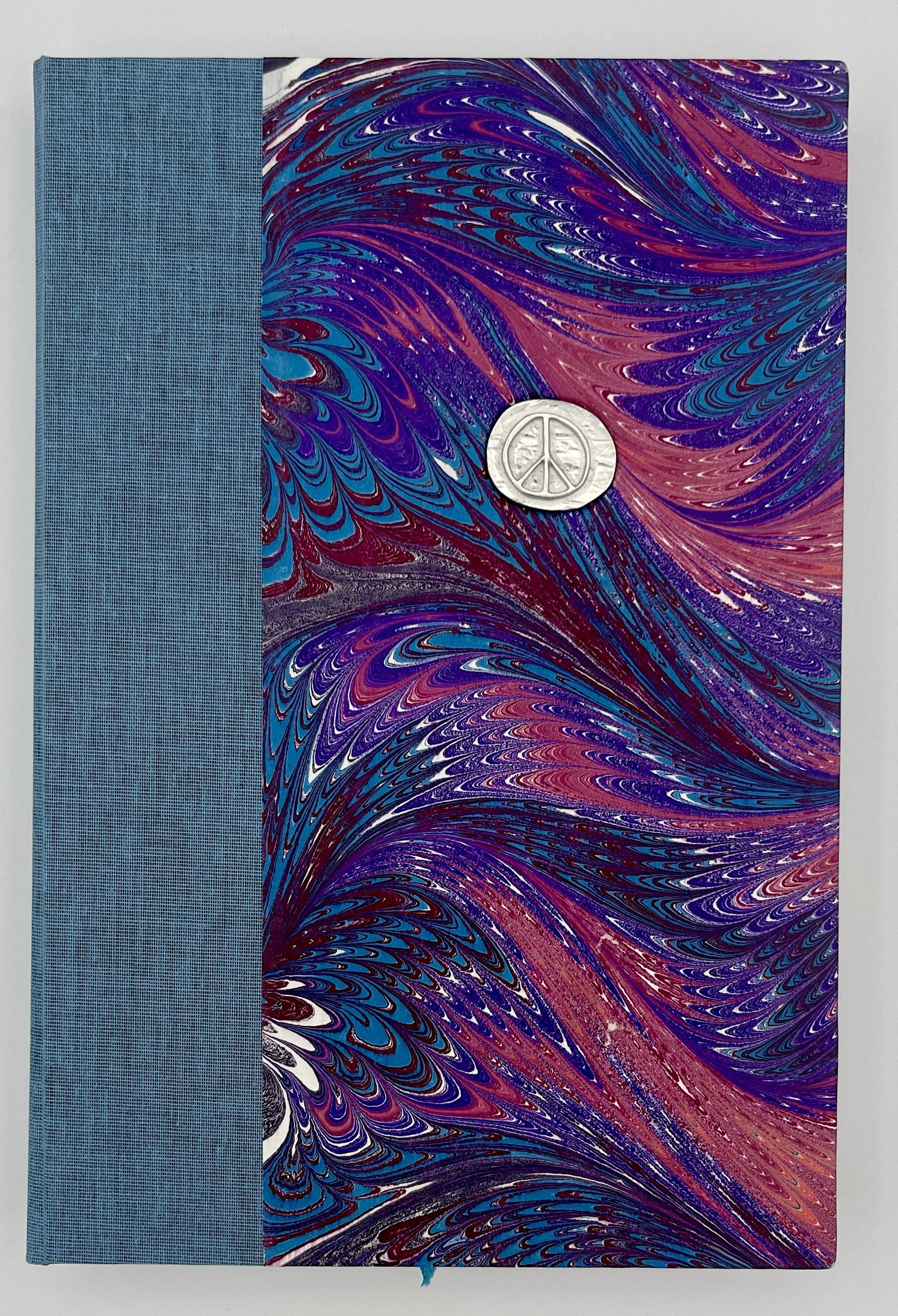Peace
This hand-sewn journal is made from 80 #s sulphite drawing paper stitched with Irish linen thread in the linked pattern that was developed by the ancient Copts. This stitch allows a book to lay open flatly at any page.
Its endbands are blue and white cotton, and its bookmark is blue grosgrain ribbon. Its spine is covered in blue Dubletta cloth from the Netherlands, and its boards are wrapped in paper that was hand-by Betty Caponi in Monte San Giusto, Italy.
Treasure binding began with monks in the 6th Century who would encrust volumes with jewels. During the Renaissance, there was a resurgence in treasure binding. This is a contemporary revival of the treasure binding in which a lucky charm has been embedded in the cover of this book.
The talisman in this journal is a pewter peace sign cast by an Indianapolis jeweler. It is the summer of love all over again.
This book is roughly 6 x 9” with a few more than 150 pages.
This hand-sewn journal is made from 80 #s sulphite drawing paper stitched with Irish linen thread in the linked pattern that was developed by the ancient Copts. This stitch allows a book to lay open flatly at any page.
Its endbands are blue and white cotton, and its bookmark is blue grosgrain ribbon. Its spine is covered in blue Dubletta cloth from the Netherlands, and its boards are wrapped in paper that was hand-by Betty Caponi in Monte San Giusto, Italy.
Treasure binding began with monks in the 6th Century who would encrust volumes with jewels. During the Renaissance, there was a resurgence in treasure binding. This is a contemporary revival of the treasure binding in which a lucky charm has been embedded in the cover of this book.
The talisman in this journal is a pewter peace sign cast by an Indianapolis jeweler. It is the summer of love all over again.
This book is roughly 6 x 9” with a few more than 150 pages.
This hand-sewn journal is made from 80 #s sulphite drawing paper stitched with Irish linen thread in the linked pattern that was developed by the ancient Copts. This stitch allows a book to lay open flatly at any page.
Its endbands are blue and white cotton, and its bookmark is blue grosgrain ribbon. Its spine is covered in blue Dubletta cloth from the Netherlands, and its boards are wrapped in paper that was hand-by Betty Caponi in Monte San Giusto, Italy.
Treasure binding began with monks in the 6th Century who would encrust volumes with jewels. During the Renaissance, there was a resurgence in treasure binding. This is a contemporary revival of the treasure binding in which a lucky charm has been embedded in the cover of this book.
The talisman in this journal is a pewter peace sign cast by an Indianapolis jeweler. It is the summer of love all over again.
This book is roughly 6 x 9” with a few more than 150 pages.







